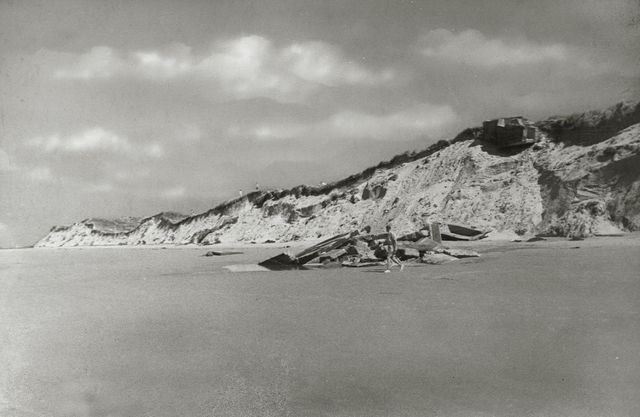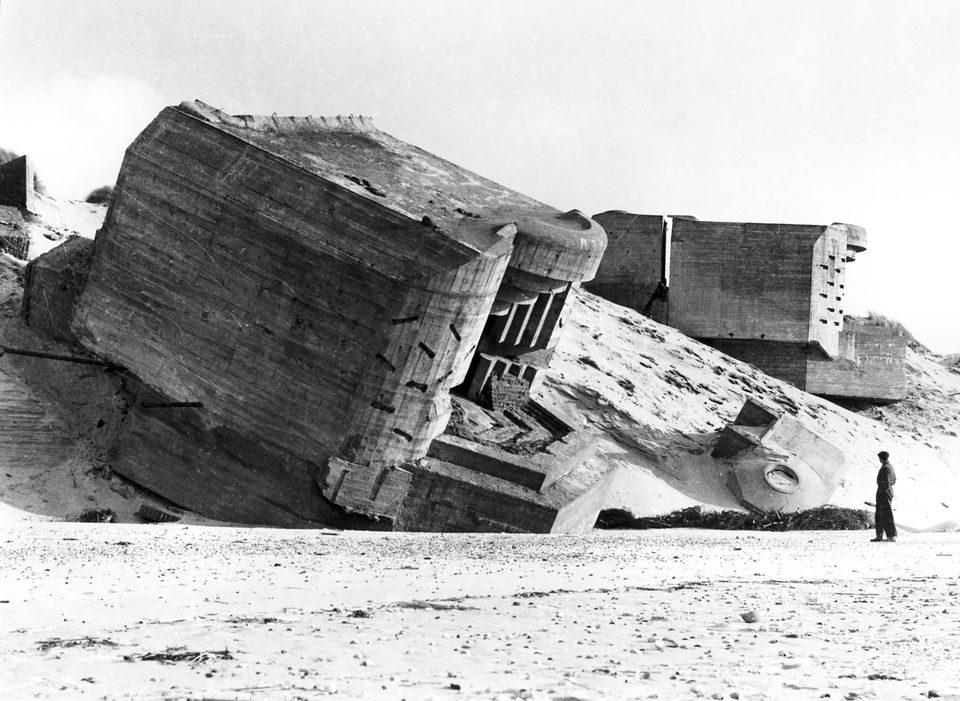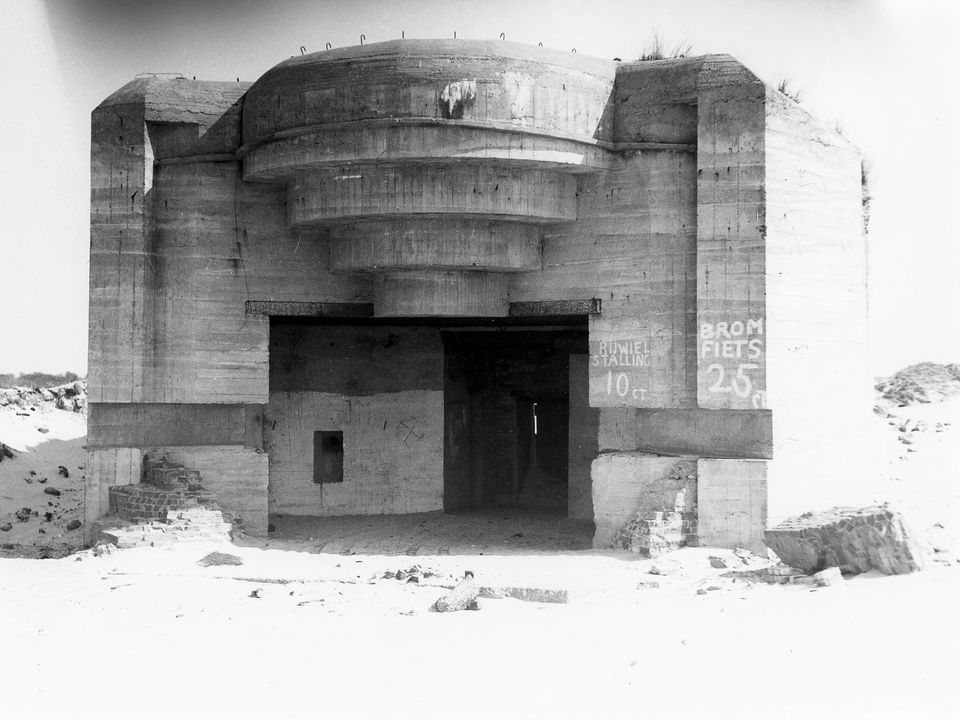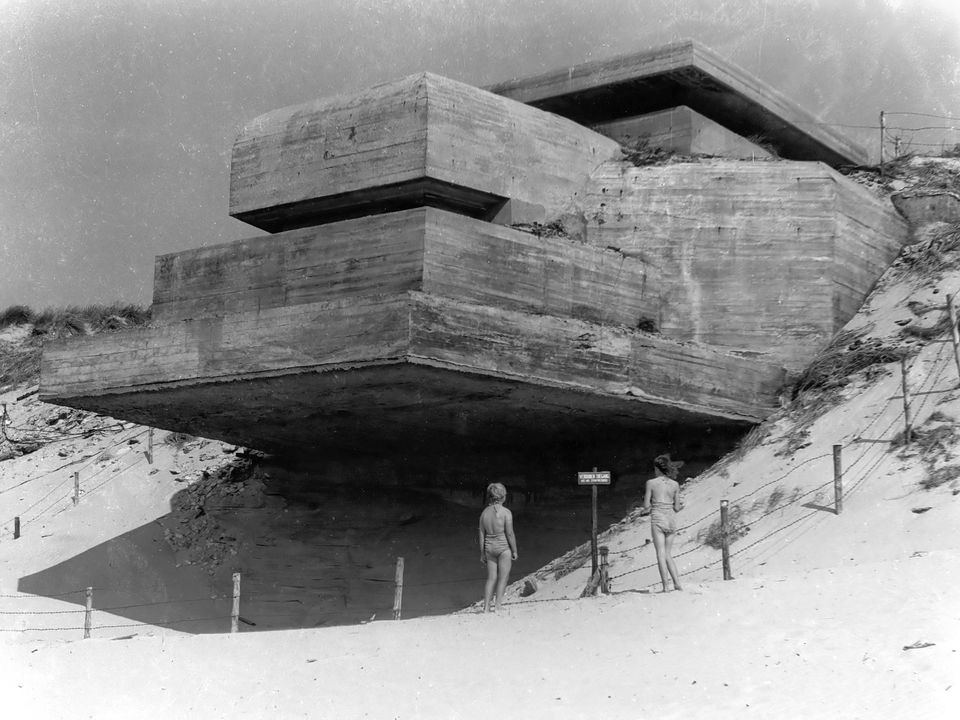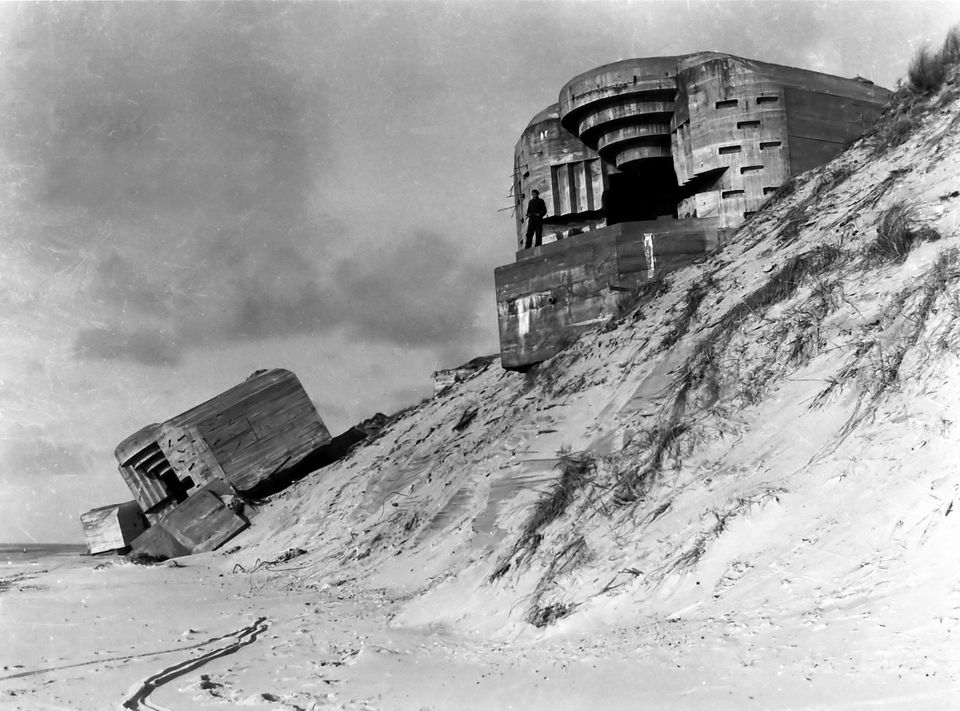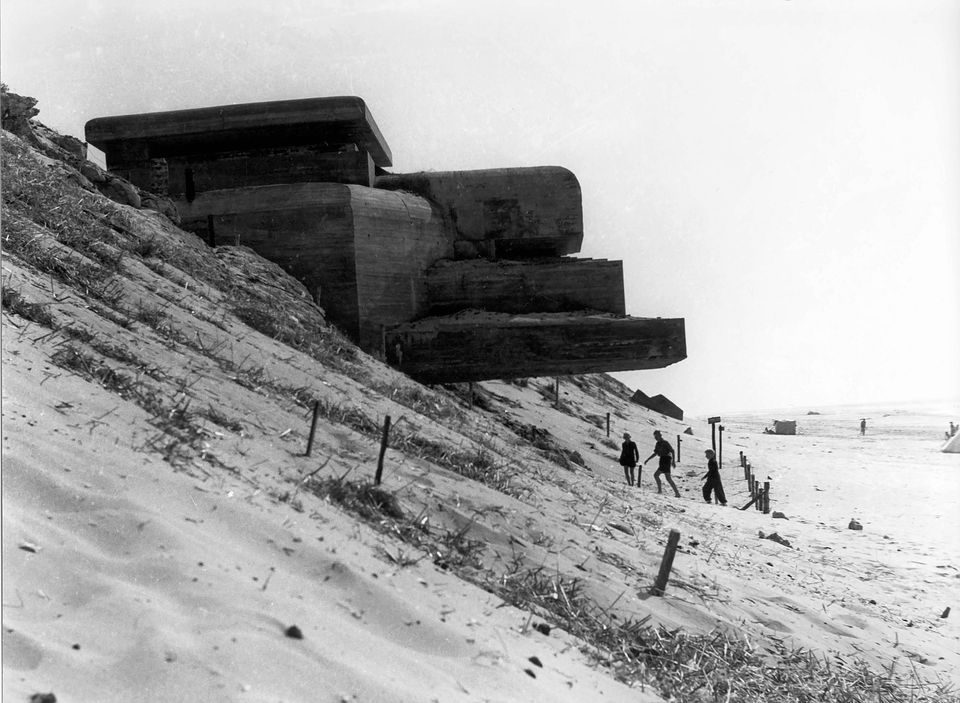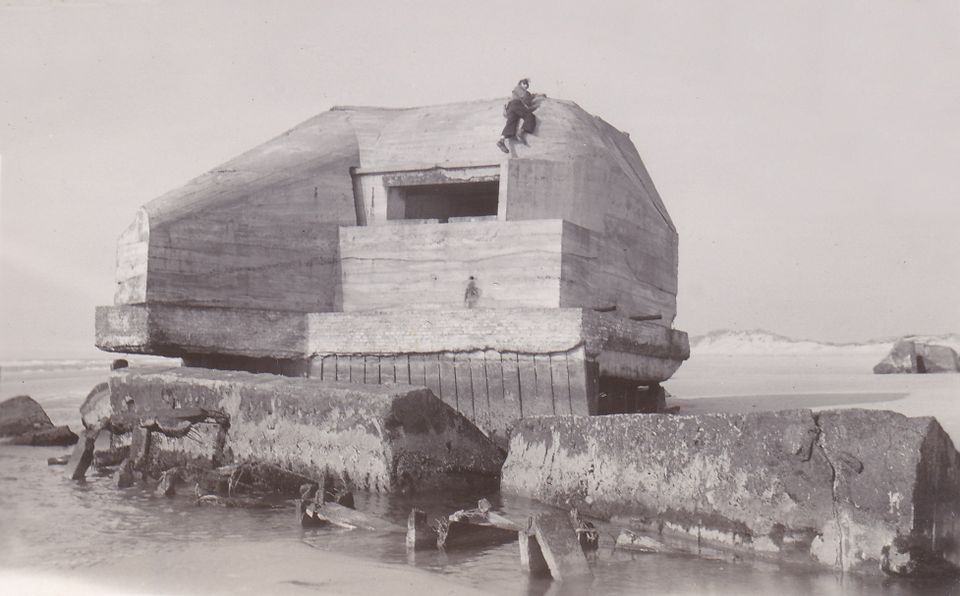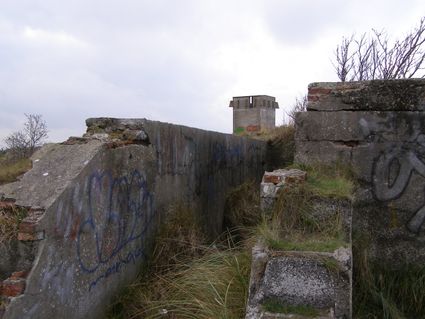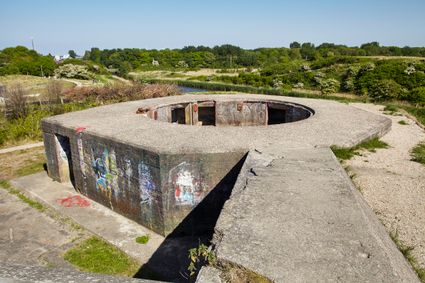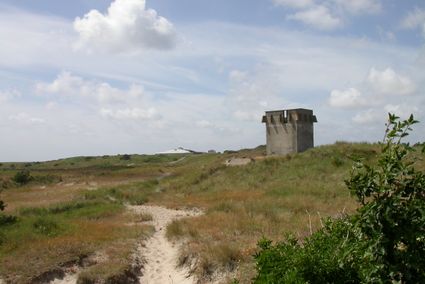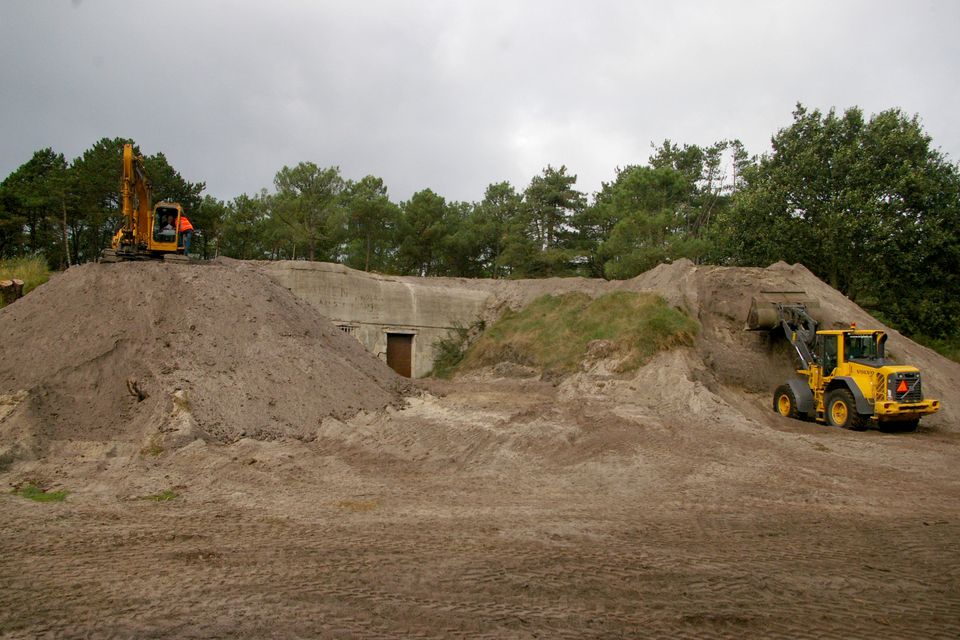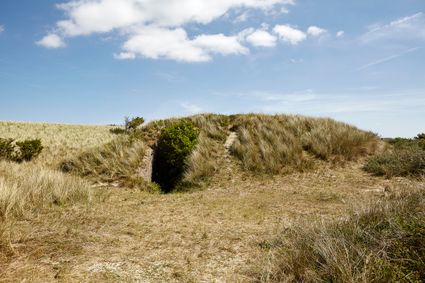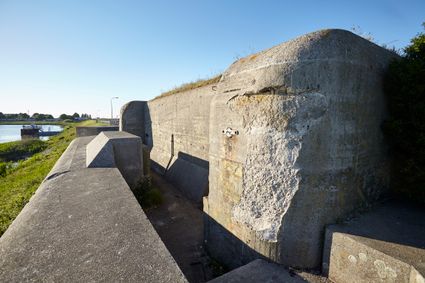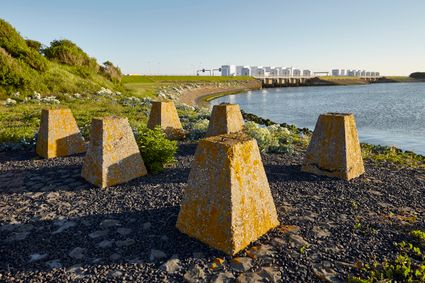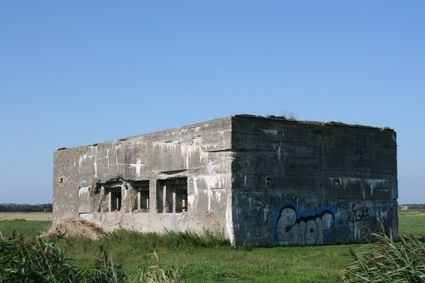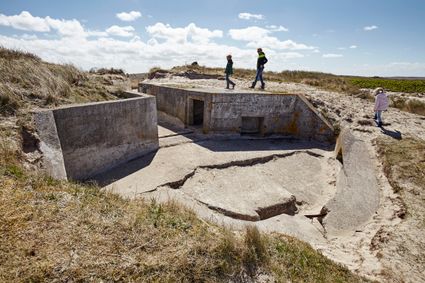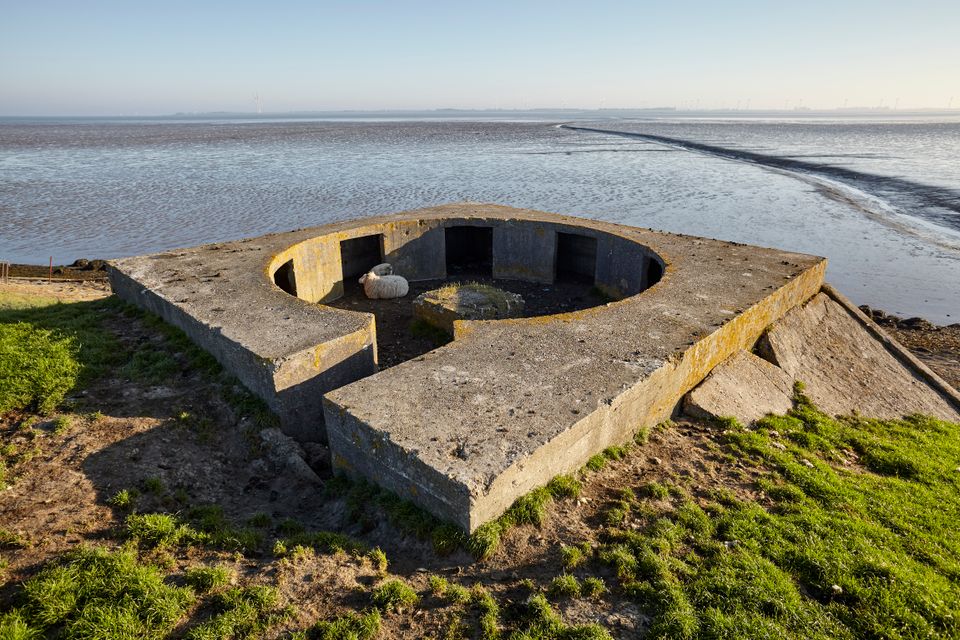Forgotten heritage
During the post-war period, bunkers were handled in various ways. On the beaches, the roadblocks and mines were removed as quickly as possible. The dune area was also cleared of mines. The landscape began to look natural again but in reality it was resting on a concrete foundation. Looking at it with an archaeologist’s eye can reveal interesting information. Seemingly untouched landscapes sometimes reveal unexpected secrets.
Den Helder
Along the sea wall near Den Helder, bunkers that form a threat to the coast protection are removed quite quickly. But in the dune areas and on the islands, the German bunkers are simply covered with sand. Below Huisduinen, the bunker (type L 485) that was the foundation for the Mammut radar installation is resting under a large dune. Behind it, two Flak bunkers (types L409A and L4010A) are hidden in the sand. These bunkers were always built on high ground, so with sand poured over them after the war the dunes became even higher. In the marsh area of Noarderleech, concrete dummy bombs are still discovered quite frequently. Together with the observation post, they are proof that German bombers practised on ship models here. Silent witness, German pilot G. Wilhelm, has had his final resting place here since 16 July 1943, buried deep in the ground with his Messerschmitt 106b.
Terschelling
In some places, entire bunker complexes have disappeared under the sand, such as the Tiger Stellung on Terschelling, a complex consisting of nearly 100 - mostly thin-walled - bunkers. The bunkers were still there, but not visible until curious enthusiasts started excavating the most common bunkers and a unique visitor experience was created. Only some of the bunkers have been excavated, but the connection is visible and tells an impressive story.
Den Oever and Kornwerderzand
Not much remains of the German occupation on the Afsluitdijk. Only three bunkers (types 612 and 667) were added to the Dutch fortification on Kornwerderzand by the occupiers. These face westward and were an addition to the fortification facing eastward. But an archaeologist does of course see remains of German occupation on the Stellings of Den Oever and Kornwerderzand. The Stelling of Den Oever is currently still overgrown by wild privet and elderberries, but the ramparts of the Dutch casemates are still intact and some trenches are visible. If you look closely, you can see some German concrete here or there: a Kochbunker, a Tobruk, two Deckungslöcher, all of them small constructions that are easy to miss. Large bunkers in Baustärke A and B were never built here. The Germans simply repurposed the Dutch casemates that were already here.
Stelling Wons
Stelling Wons, a complex of field fortifications, seems to have disappeared completely, but traces of it can surely still be discovered.
Punt van Reide
Special mention goes to the Ringstände that were embedded in the sea dike near Punt van Reide. Contrary to the bunkers in the Zeedijk near Den Helder, these were not demolished during a previous dike reinforcement. Hopefully, a way will be found to preserve this unique site during future dike reinforcements.
-
1945 onwards
1945 onwards
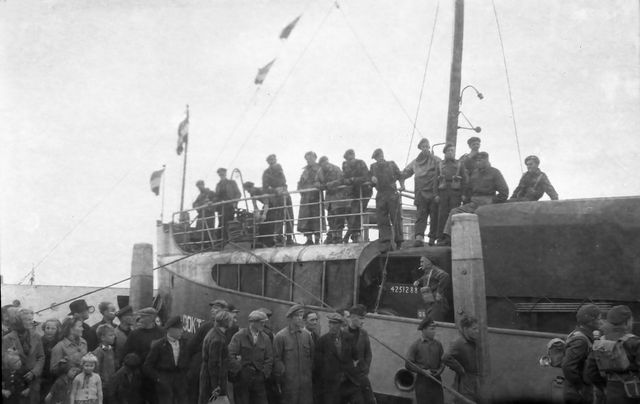
-
The 1950s
The 1950s
